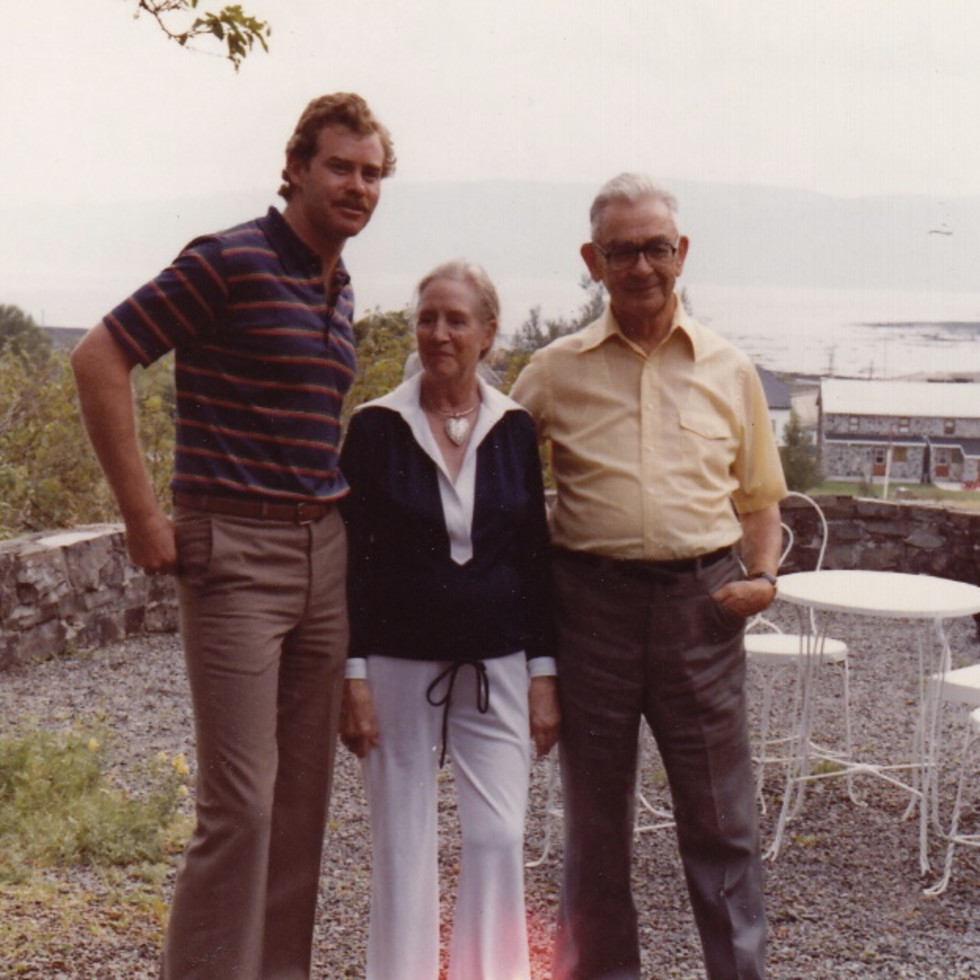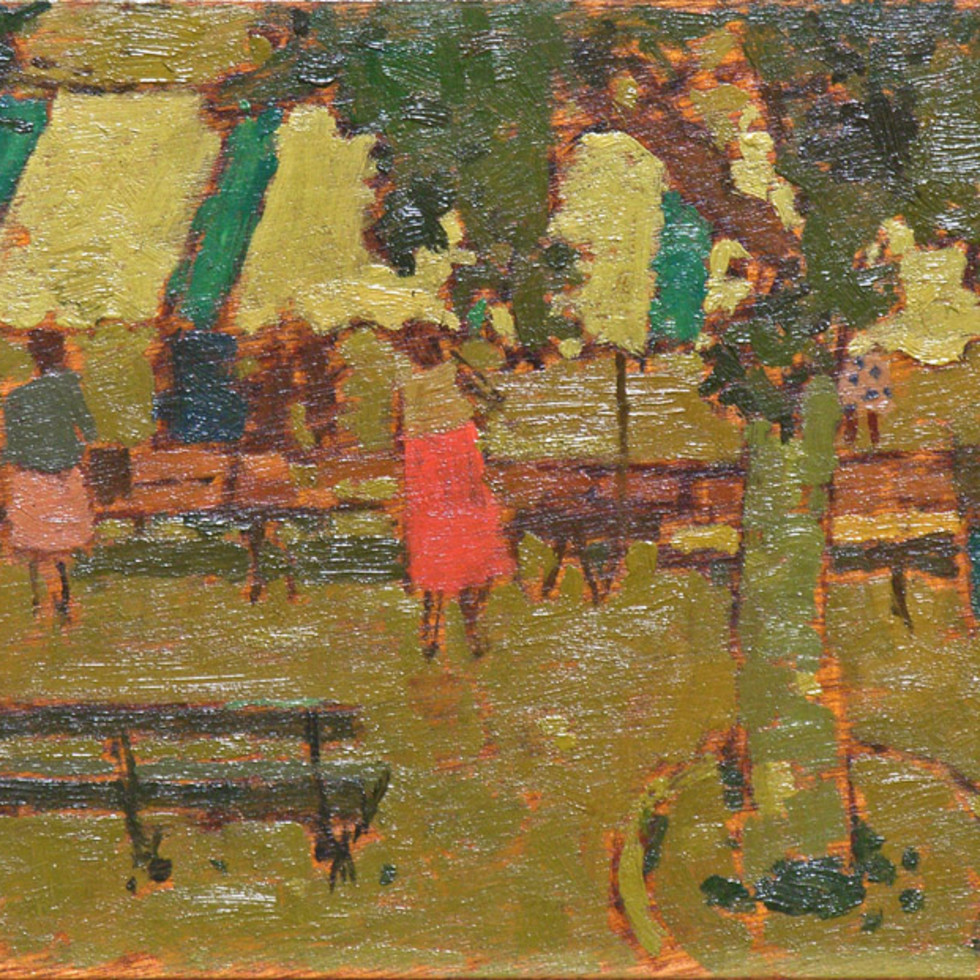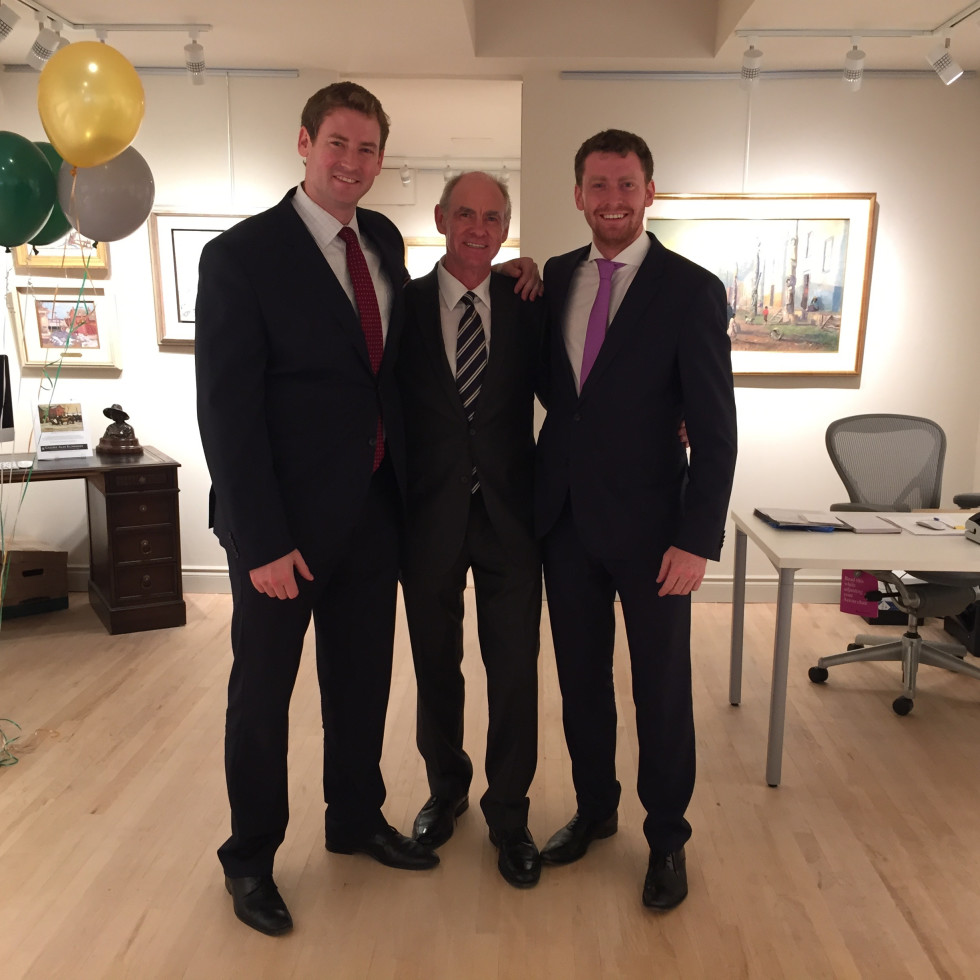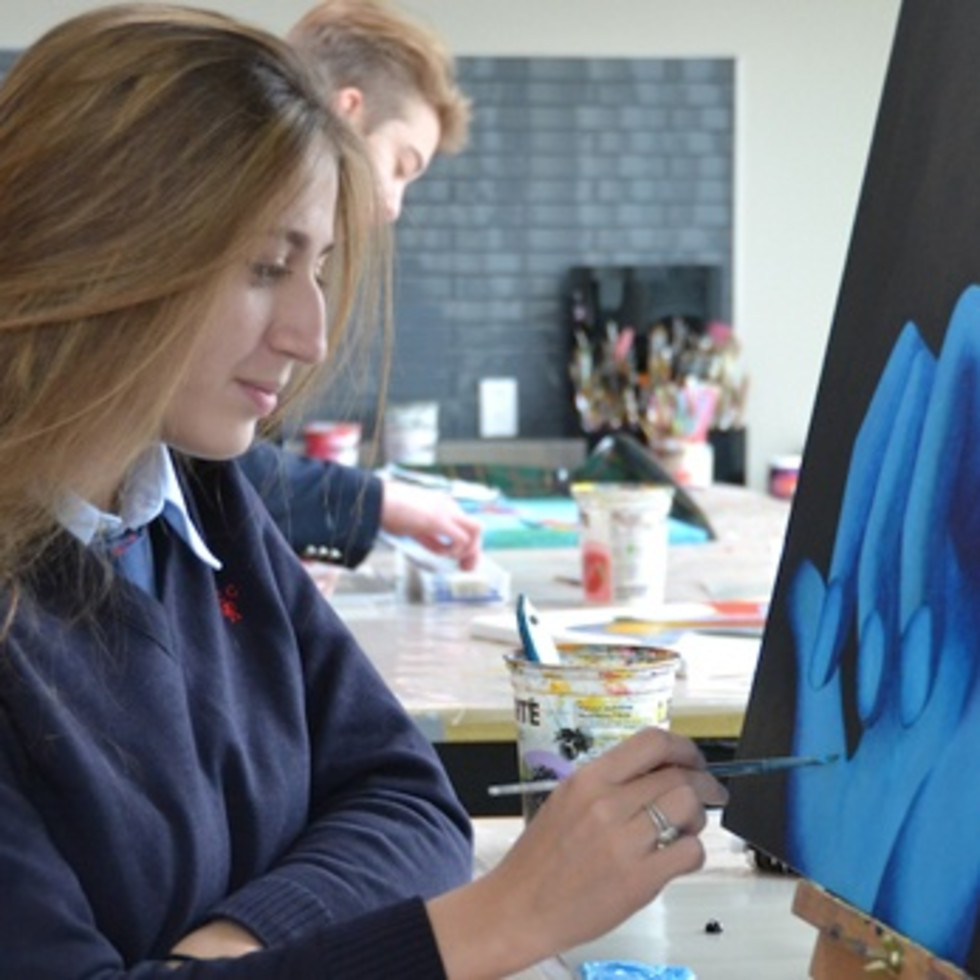Jean McEwen
 "There are two ways to judge a painting ... One is based on criteria and theories of art. The second is based on the sensations we get before a picture. I paint the second way."
Jean McEwen, 1956
"There are two ways to judge a painting ... One is based on criteria and theories of art. The second is based on the sensations we get before a picture. I paint the second way."
Jean McEwen, 1956
In 1944, Jean McEwen enrolled in the Faculty of Pharmacy at the Université de Montréal. He wrote poetry, and was part of a group of students that gravitated around the French-Canadian poet, Francois Hertel. In addition, he published several poems in the literary journal Gants du ciel. In 1946, inspired by a film on the life of Gauguin, The Moon and Sixpence, he became convinced that painting constitutes a form of expression equal to that of poetry and decided to teach himself painting while continuing his studies in Pharmacy. He received his Pharmacy degree in 1949. That same year, he met Paul Emile Borduas, head of the painter's collective Les Automatistes, who gave him regular advice and encouraged him to go to Paris. Jean McEwen quit his job as a pharmacist in 1951 to spend a year in Paris, where he got in touch with Jean-Paul Riopelle. While in Europe he travelled to Spain, Italy, and Holland and spent his summer in Belle-en-Mer (Brittany, France) with Riopelle.
In 1953, Jean McEwen returned to Montreal and became a representative of pharmaceutical products for the pharmaceutical company Frosst. In 1956, he became a member of the Association of Non-Figurative Artists in Montreal (AANFM), and then is elected president in 1960. That same year, while vacationing in Ogunquit, Maine he created his first artist's book, Midi temps j'aime-Poème en couleur. In 1961, he received first prize in the Concours artistique de la province de Québec. That same year, he also won the Hadassah prize, plus a grant from the Canada Council for the Arts. In 1963, he reduced his working hours at Frosst in order to devote more time to painting. He received an honourable mention at the Biennale of Sao Paulo, Brazil and wins the Jessie Dow Prize at the Salon du Printemps at the Montreal Museum of Fine Arts, and created a mural painting with five panels entitled Rouge en liesse, commissioned for the Toronto International Airport. That year he travelled to Greece, Crete, and the Isle of Rhodes, and vacationed in the Island of Majorque (Baléares). In 1965, he abandons oil painting for acrylic painting and receives a bursary from the Canada Council of the Arts. In 1966, he created a mural in stained glass commissioned for Sir George Williams University (today Concordia University) in Montreal. In 1967, he created a mural painting in oil, Éclats de gaité verte, for the Port-Royal Theatre at Place des Arts in Montreal (today the Jean Duceppe Theatre) and travelled to Italy, Sicily, and England. In 1968, he received an honourable mention at the Sondage 68 Exhibition, held at the Montreal Museum of Fine Arts. The following year he is elected member of the Royal Canadian Academy of Arts. Soon after, he abandoned acrylic painting and returns to oil painting.
Jean McEwen finally quit his job at Frosst in 1973, to dedicate himself entirely to painting. In 1977, he received the Victor Lynch-Staunton award which honours distinguished artists in Canada. This enabled McEwen to work in Paris from September 1977 to June 1978. During the eighties he accepted a position as a sessional lecturer at the Université du Québec à Trois Rivières as well as a position as sessional lecturer in the Faculty of Fine Arts (Department of Visual Arts) at Concordia University in Montreal. In 1985, he received a grant from the Canada Council for the Arts and left the Université du Québec à Trois Rivières.
In 1987, under the direction of Pierre Théberge, the Montreal Museum of Fine Arts dedicated its first retrospective to McEwen's artwork. In 1991, he created a monumental piece, En remontant les rouges, for the headquarters of Scotia Bank on Sherbrooke Street in Montreal. In 1995, McEwen retired from Concordia University. He received the Paul-Émile Borduas Prize in 1998, the highest distinction awarded by the province of Québec.
Jean McEwen passed away from a heart attack on January 9, 1999.












